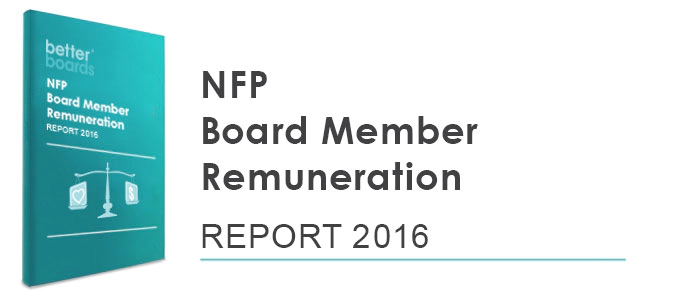leadership
Disrupt or Be Disrupted ... The Six Leadership Challenges of the New Customer-Driven Competitive Marketplace
Published: August 8, 2016
Read Time: 6 minutes

The strategic and organisational impacts and implications of the new customer-driven, competitive marketplace of human services are profound. Never before and probably never again will the boards, chief executive officers and senior managers of Australian community businesses (NFPs) face such a cataclysmic shift in the way they need to think, behave and operate.
The shift from a government-funded, welfare paradigm to a customer-driven, competitive market paradigm should not be underestimated – there are immense strategic and organisational challenges as well as significant opportunities.
For leaders of community businesses, there are six leadership challenges they need to understand and address, if they are to secure their organisations’ future success and sustainability in this new world order.
Challenge one: Leaders, reinvent yourselves
If leaders are to develop, drive and deliver a new business model and game changing strategies that enable their organisations to operate in the new customer-centric marketplace, they must become transformational leaders.
Therefore leaders must first understand what transformational leadership is and how it is applied, and most importantly, reinvent themselves; moving from existing leadership and management frameworks and processes to new frameworks and processes that will propel both their people and their organisations into the customer-driven, competitive marketplace of human services.
Challenge two: Understand the new paradigm, make the paradigm leap
Understanding and coming to grips with the key principles, parameters and processes of the customer-driven market paradigm is critical.
The large majority of community businesses were born of the welfare paradigm, in fact they were perfectly adapted to this environment, which was characterised by a framework comprising Commonwealth and State government legislation, standards, contracts and funding.
Given this fact, the majority of leaders of community businesses had limited need for an understanding or experience of the customer, retail and commercial realities of competitive marketplaces.
Today however, a paradigm leap is required. Moving from the government funded, welfare paradigm to the customer-driven market paradigm, a journey that will require transformational leaders to sequentially and logically take their people and their organisations to an unknown destination.
Challenge three: Operate today’s business, create tomorrow’s business
When any prevailing paradigm changes, disruption occurs. Chief executive officers and senior managers must therefore get in front of the disruption, the waves of discontinuous change that are driving their human service industry/sector into this new paradigm.
Challenge three requires chief executive officers and senior managers to take on two jobs, operating today’s business, whilst creating the business of tomorrow.
Critically, these leaders will need to make significant changes in how and where current human, financial and capital resources are allocated, ensuring the current budget does not favour existing business activities and projects over new strategies.
To successfully achieve this challenge, solid insights of the future will be required, enabling a shared vision to be created and brave discussions and bold decisions to be made.
In essence, a new business model for a new paradigm is required. A new business model should encompass both re-invented existing services and new and innovative services.
Challenge four: New entrants to the marketplace have no legacy issues
All existing human service organisations have legacy issues. Legacy issues are organisational elements or characteristics such as cultural, systems, risk management, governance, training, branding or marketing issues. To address legacy issues requires significant time and effort to marshal and redeploy human and financial resources in order to just advance to today’s industry “benchmarks”.
New entrants to the marketplace have no legacy issues. New entrants to the marketplace can put all of their time and effort into redeploying their human and financial resources into engaging and delighting customers and capturing and securing marketshare.
Therefore existing organisations need to discuss and agree on a strategy and associated projects to actually disrupt their organisations and therein is a whole new business model, markets, market channels, services and revenue, structure and positions, systems and processes.
Challenge five: Transform your people, take them on the journey
Transformational leaders must manage the present, selectively forget the past and create the future.
Such an approach provides not only a strategic pathway for the transformation of the organisation, but the basis upon which transformational change strategies can be developed and deployed, thereby engaging managers, staff, volunteers, customers, families or communities on the journey to the new world.
People are the foundational resource of human service organisations.
Leading organisations are bringing together the human qualities and/or processes of creativity, innovation and entrepreneurship to form their new business development frameworks. Transformational leaders engage and empower their people to operate within this framework, a framework that is squarely focused on only one person, the customer.
Transformational leaders will, in summary, not only transform themselves, but transform their people, thereby enabling the transformation of their organisations’ culture, the attitudes, behaviours and work practices of individuals, teams and the organisation.
Challenge six: Re-Engineer your organisation, align it to your business model
Whilst a new business model should, amongst other things, contain the primary elements of customers and markets, market channels and service categories, it must also provide the foundation upon which the future governance and organisational structure and positions, systems and processes, and strategies and projects should be based.
It is not possible to create and operate a new business model on old, redundant governance and organisational structures, systems and strategies.
Consequently, boards, chief executive officers and senior managers who are truly committed to becoming disruptors, rather than being the disrupted, will need to face the realities and practicalities of re-engineering all components and mechanisms of their organisations… a transformational process that is critical, if a new business model is to be delivered and deployed in a timely and efficient manner.
Conclusion
Reflecting on these six leadership challenges is one thing, another will be enacting powerful game changing strategies and decisive projects to ensure:
- Current and future customers can access high quality services;
- The organisation remains successful and sustainable; and
- The contribution to the economic, community and regional development of the communities and regions in which the organisation operates.
Successfully navigating disruption to the new customer-driven, market paradigm will require leaders to align, execute and renew their organisations faster than existing or new competitors. In essence, market forces and competitive advantage will rule the day, not Commonwealth or Statement government legislation, standards, contracts and funding.
The only way to achieve this position is for boards, chief executive officers and senior managers to become transformational leaders who disrupt their organisation and the industry/sector they operate within, thereby ensuring their organisation is not disrupted.
Michael recently presented a webinar entitled The Journey To A Customer Driven Marketplace: Practical Tips & Insights
This article first appeared in the Better Boards Conference Magazine 2016.
Share this Article
Recommended Reading
Recommended Viewing
Author
-
Principal Consultant
Australian Strategic Services
- About
-
As Chairman of Better Boards and Managing Director of Australian Strategic Services, Michael Goldsworthy’s passion for community businesses (NFPs) cannot be underestimated. For thirty years he has advanced their cause, strengthened their governance and delivered pragmatic solutions; ensuring community businesses remain a vital part of Australian communities and the economy.
Found this article useful or informative?
Join 5,000+ not-for-profit & for-purpose directors receiving the latest insights on governance and leadership.
Receive a free e-book on improving your board decisions when you subscribe.
Unsubscribe anytime. We care about your privacy - read our Privacy Policy .










